Human Orbital Spaceflights
![]()
International Flight No. 135Soyuz TM-11DerbentUSSR |
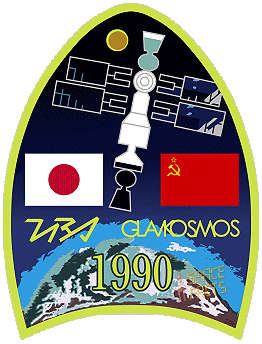 |
![]()
Launch, orbit and landing data
walkout photo |
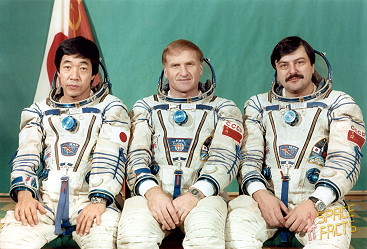 |
|||||||||||||||||||||||
alternative crew photo |
alternative crew photo |
|||||||||||||||||||||||
alternative crew photo |
alternative crew photo |
|||||||||||||||||||||||
alternative crew photo |
alternative crew photo |
|||||||||||||||||||||||
Crew
| No. | Surname | Given names | Position | Flight No. | Duration | Orbits | |
| 1 | Afanasiyev | Viktor Mikhailovich | Commander | 1 | 175d 01h 50m 42s | 2770 | |
| 2 | Manarov | Musa Khiromanovich | Flight Engineer | 2 | 175d 01h 50m 42s | 2770 | |
| 3 | Akiyama | Toyohiro | Research Cosmonaut | 1 | 7d 21h 54m 40s | 125 |
Crew seating arrangement
|
 |
|
||||||||||||||||
Backup Crew
|
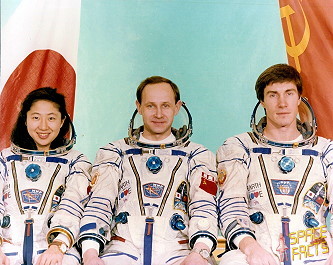 |
||||||||||||||||||||
alternative crew photo |
Hardware
| Launch vehicle: | Soyuz-U2 (No. G15000-046) |
| Spacecraft: | Soyuz TM-11 (7K-STM No. 61) |
Flight
|
Launch from the Baikonur Cosmodrome and
landing 68 km southeast of Dzheskasgan. Soyuz TM-11 carried the first commercial flight in Soviet space flight history. Toyohiro Akiyama's network, the Tokyo Broadcasting System (TBS), paid for the flight. The Soviets called this their first commercial spaceflight and claimed to have earned $14 million. The journalist was scheduled to make one 10 min TV broadcast and two 20 min radio broadcasts each day. Electrical power and video and TV system incompatibilities forced the Japanese to make extensive use of converters. His equipment, which weighed about 170 kg, was delivered by Progress-M spacecraft. Following a two-day solo flight Soyuz TM-11 docked with the Soyuz TM-10-Kvant1-Mir-Kristall-Kvant2 complex on December 04, 1990. The Mir-8 crew of Viktor Afanasiyev, Musa Manarov (on his second Mir visit), together with Japanese television journalist Toyohiro Akiyama were welcomed aboard Mir by the Mir-7 crew. Scientific work in Earth observation, biology, medicine and materials sciences with seventh resident crew of the station was done. Then Viktor Afanasiyev and Musa Manarov became the eighth resident crew On December 05, 1990 Toyohiro Akiyama's couch was transferred to Soyuz TM-10. On December 08, 1990 Gennadi Manakov and Gennadi Strekalov commenced loading Soyuz TM-10's descent module with film and experiment results. TBS broadcast the landing of the Mir-7 crew and Toyohiro Akiyama landing live from Kazakhstan. The first EVA occurred on January 07, 1991 (5h 18m). Viktor Afanasiyev and Musa Manarov brought with them a replacement hinge for the Kvant2 airlock hatch. The cosmonauts underwent a medical exam as part of their EVA preparations on January 03, 1991. On this date - Christmas Day in the Russian Orthodox religious calendar - the cosmonauts gave engineers and flight controllers in the TsUP a present by successfully replacing the hinge damaged six months earlier during Mir-6. The work was described as "very complex and very delicate" because the hinge was not designed for EVA replacement. The replacement hinge was designed to be installed by weightless cosmonauts working in pressure suits with EVA tools. The EVA was scheduled to last 4 hours, 20 minutes. Four hours into the EVA Viktor Afanasiyev and Musa Manarov entered the SALC and closed and sealed the hatch to check their work, then reopened it and egressed to carry out other EVA tasks. These included moving parts and equipment for the upcoming solar array transfer EVA to Kvant2's exterior; removing a camera from the Kvant2 "video spectrum complex" (the Gemma-2 unit for Earth environment monitoring) for repair inside Mir; and removing for return to Earth a space exposure cassette of superconductive materials. The second spacewalk was conducted on January 23, 1991 (5h 33m). Viktor Afanasiyev and Musa Manarov installed the 45-kg (99-lb) telescoping Strela boom on a Mir base block launch shroud attachment. Strela ("arrow") was installed primarily for moving the 500-kg (1100- lb) solar arrays on Kristall to new locations on Kvant1, but would also be used for moving cosmonauts and equipment around Mir's exterior and as a mobile handrail. The task was originally scheduled to occur over two EVAs. This EVA lasted almost 2 hours longer than planned, but concluded with Strela entirely installed. To test the device, Musa Manarov rode the end of the boom while Viktor Afanasiyev operated its cranks. Before closing out the EVA the cosmonauts removed the Ferrit space exposure experiment from Kvant2 and replaced it with the Sprut-5 device for measuring particle flow near Mir. On January 26, 1991 (6h 20m) both cosmonauts performed the third EVA. The cosmonauts installed two supports for the Kristall solar arrays on either side of Kvant1. They worked near the Kvant1 Kurs system antenna, which was used to guide Progress-M and Soyuz-TM spacecraft during docking at the Mir complex aft port. They also installed laser retroreflectors. Unmanned cargo spaceship Progress M-6 docked with the station on January 16, 1991. The freighter delivered new life support equipment to replace life-expired equipment aboard. Progress M-6 undocked on March 15, 1991 and was destroyed in reentry on the same day. On March 21, 1991 as Progress M-7 approached the station, it broke off its approach 500 m from the aft docking port. On March 23, 1991 the craft made a second approach, but 20 m from the rear port a controller in the TsUP detected a "catastrophic error" and broke off the approach. Progress M-7 passed within 5 to 7 m of the station, narrowly avoiding antennas and solar arrays. The cargo ship was left in orbit near the station while the problem was worked on. To diagnose the Progress M-7 problem, Viktor Afanasiyev and Musa Manarov undocked Soyuz TM-11 from the front port on March 26, 1991 and transferred it to the aft. During approach to the aft port, they used Kurs, rather than carrying out the transfer under manual control, as was typical. They found that their spacecraft mimicked Progress M-7's behavior, veering away from the docking port. The cosmonauts completed a normal manual docking at the aft port, having determined that the problem was in Mir's aft port Kurs antenna. On March 28, 1991, Progress M-7 docked at Mir's front port. The fourth and final EVA occurred on April 25, 1991 (3h 34m). Progress M-7, an automated cargo ship, approached the Mir station aft port on March 21, 1991. About 500 m (1640 ft) out, the spacecraft's Kurs automated guidance system was unable to lock on a corresponding antenna on the Kvant1 module, and the Progress drifted past Mir. A second docking attempt on March 23, 1991 ended with a flight controller aborting the docking after noting a "catastrophic error" in the robot ship's orientation just 20 m (65.6 ft) from the station. Progress M-7 passed within 7 m (23 ft) of Mir, narrowly missing solar arrays and antennas. On March 26, 1991 Viktor Afanasiyev and Musa Manarov undocked their Soyuz TM-11 spacecraft from Mir's front port and approached the aft port using the Kurs system. Their spacecraft imitated Progress M-7's performance, allowing them to localize the problem in the Kurs antenna on Kvant1. They completed a manual docking at the aft port. Progress M-7 docked automatically at the forward port on March 28, 1991. Viktor Afanasiyev and Musa Manarov spent April 23, 1991 checking their Orlan-DMA suits for an EVA to inspect Kurs. On this date the EVA was delayed 15 minutes while Viktor Afanasiyev reconnected a cable in the Kvant2 airlock. The cosmonauts set up an experimental thermo-mechanical joint outside Kvant2 early in the EVA. The experiment was designed to provide data supporting Sofora truss deployment on Kvant1 during the next Mir Principal Expedition. Viktor Afanasiyev put the camera taken inside Mir on January 07, 1991 back into service on Kvant2's movable platform. Meanwhile, Musa Manarov clambered a distance of about 30 m (100 ft) to inspect the balky Kvant Kurs antenna. By doing so he violated the Soviet EVA "buddy policy" which required that Viktor Afanasiyev accompany him. Musa Manarov televised images of the Kurs antenna to engineers in the TsUP. One 23-cm (9.2-in) parabolic dish was missing, apparently knocked off by an accidental kick during the January 26, 1991 EVA. The cosmonauts then installed markers ("road signs") on handrails to assist future EVA cosmonauts in finding their way around Mir's expanding exterior. They collected the thermomechanical joint installed at the start of EVA before returning to the Kvant2 airlock. Musa Manarov later received a rebuke for moving off alone to inspect the Kurs antenna. On May 20, 1991, the Mir-8 crew welcomed aboard Mir the Mir-9 crew of Anatoli Artsebarsky and Sergei Krikalyov (on his second visit to the station), accompanied by British Research Cosmonaut Helen Sharman. Helen Sharman was aboard as part of Project Juno, a cooperative venture partly sponsored by British private enterprise. Helen Sharman's experimental program, which was designed by the Soviets, leaned heavily toward life sciences. A bag of 250,000 pansy seeds was placed in the Kvant2 EVA airlock, a compartment not as protected from cosmic radiation as other Mir compartments. Helen Sharman also contacted nine British schools by radio and conducted high-temperature superconductor experiments with the Elektropograph-7K device. Helen Sharman commented that she had difficulty finding equipment on Mir as there was a great deal more equipment than in the trainer in the cosmonaut city of Zvezdny Gorodok. During a communication session with a British girls' school on May 21, 1991 Helen Sharman commented that Mir was experiencing solar array problems because of the station's changing orientation. Late that day the level of background noise on the station suddenly fell from the customary 75 decibels as fans, circulating pumps, and other equipment shut down. The lights began to fade. A computer in the orientation system had failed, preventing the solar arrays from tracking on the Sun, and causing Mir to drain its batteries. Helen Sharman stated that Viktor Afanasiyev and Musa Manarov told her such power problems had occurred before. When it reentered sunlight, the station was turned to recharge its batteries. The Soyuz spacecraft is composed of three elements attached end-to-end - the Orbital Module, the Descent Module and the Instrumentation/Propulsion Module. The crew occupied the central element, the Descent Module. The other two modules are jettisoned prior to re-entry. They burn up in the atmosphere, so only the Descent Module returned to Earth. The deorbit burn lasted about 240 seconds. Having shed two-thirds of its mass, the Soyuz reached Entry Interface - a point 400,000 feet (121.9 kilometers) above the Earth, where friction due to the thickening atmosphere began to heat its outer surfaces. With only 23 minutes left before it lands on the grassy plains of central Asia, attention in the module turned to slowing its rate of descent. Eight minutes later, the spacecraft was streaking through the sky at a rate of 755 feet (230 meters) per second. Before it touched down, its speed slowed to only 5 feet (1.5 meter) per second, and it lands at an even lower speed than that. Several onboard features ensure that the vehicle and crew land safely and in relative comfort. Four parachutes, deployed 15 minutes before landing, dramatically slowed the vehicle's rate of descent. Two pilot parachutes were the first to be released, and a drogue chute attached to the second one followed immediately after. The drogue, measuring 24 square meters (258 square feet) in area, slowed the rate of descent from 755 feet (230 meters) per second to 262 feet (80 meters) per second. The main parachute was the last to emerge. It is the largest chute, with a surface area of 10,764 square feet (1,000 square meters). Its harnesses shifted the vehicle's attitude to a 30-degree angle relative to the ground, dissipating heat, and then shifted it again to a straight vertical descent prior to landing. The main chute slowed the Soyuz to a descent rate of only 24 feet (7.3 meters) per second, which is still too fast for a comfortable landing. One second before touchdown, two sets of three small engines on the bottom of the vehicle fired, slowing the vehicle to soften the landing. |
EVA data
| Name | Start | End | Duration | Mission | Airlock | Suit | |
| EVA | Manarov, Musa | 07.01.1991, 17:03 UTC | 07.01.1991, 22:21 UTC | 5h 18m | Soyuz TM-11 | Mir - Kvant2 | Orlan-DMA No. 10 |
| EVA | Afanasiyev, Viktor | 07.01.1991, 17:03 UTC | 07.01.1991, 22:21 UTC | 5h 18m | Soyuz TM-11 | Mir - Kvant2 | Orlan-DMA No. 6 |
| EVA | Manarov, Musa | 23.01.1991, 10:59 UTC | 23.01.1991, 16:32 UTC | 5h 33m | Soyuz TM-11 | Mir - Kvant2 | Orlan-DMA No. 10 |
| EVA | Afanasiyev, Viktor | 23.01.1991, 10:59 UTC | 23.01.1991, 16:32 UTC | 5h 33m | Soyuz TM-11 | Mir - Kvant2 | Orlan-DMA No. 6 |
| EVA | Manarov, Musa | 26.01.1991, 09:00 UTC | 26.01.1991, 15:20 UTC | 6h 20m | Soyuz TM-11 | Mir - Kvant2 | Orlan-DMA No. 10 |
| EVA | Afanasiyev, Viktor | 26.01.1991, 09:00 UTC | 26.01.1991, 15:20 UTC | 6h 20m | Soyuz TM-11 | Mir - Kvant2 | Orlan-DMA No. 6 |
| EVA | Manarov, Musa | 25.04.1991, 20:29 UTC | 26.04.1991, 00:03 UTC | 3h 34m | Soyuz TM-11 | Mir - Kvant2 | Orlan-DMA No. 10 |
| EVA | Afanasiyev, Viktor | 25.04.1991, 20:29 UTC | 26.04.1991, 00:03 UTC | 3h 34m | Soyuz TM-11 | Mir - Kvant2 | Orlan-DMA No. 6 |
Note
Relocations of Manned Spacecrafts
| Spacecraft | from | Undocking | Time UTC | to | Redocking | Time UTC |
| Soyuz TM-11 | Mir - Baseblock | 26.03.1991 | 10:12:00 | Mir - Kvant | 26.03.1991 | 10:58:59 |
Photos / Graphics
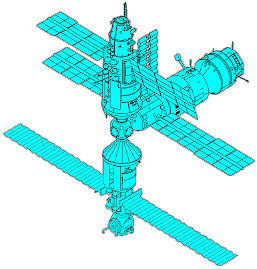 |
 |
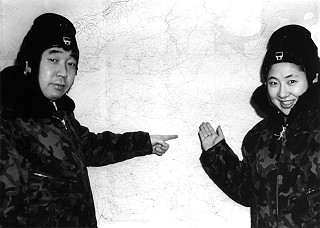 |
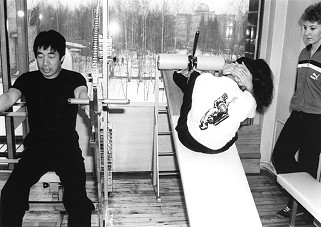 |
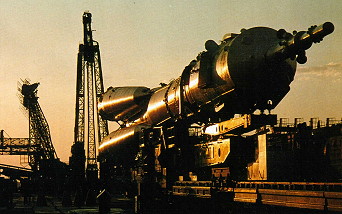 |
 |
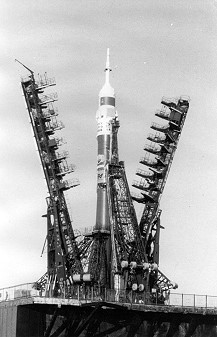 |
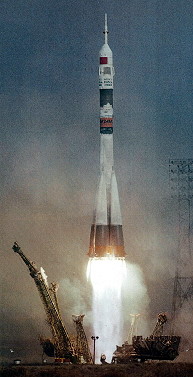 |
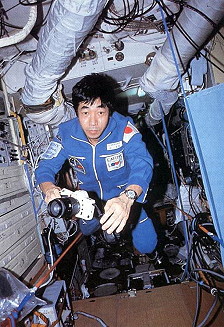 |
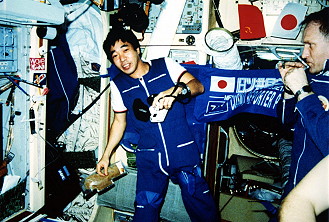 |
 |
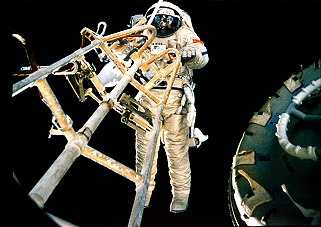 |
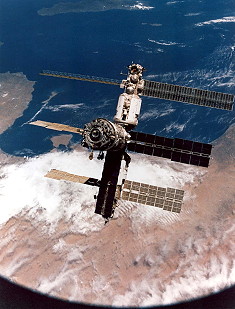 |
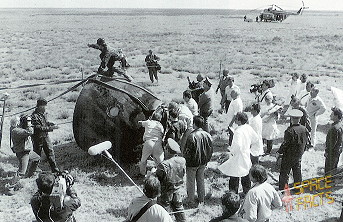 |
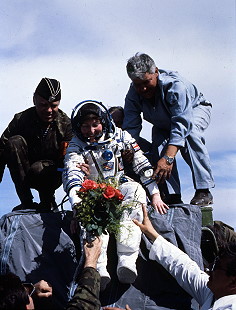 |
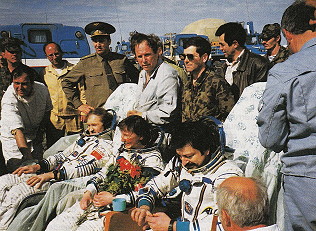 |
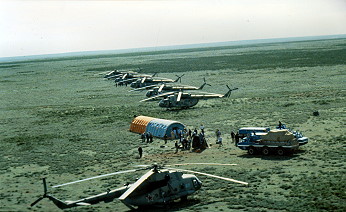 |
| © |  |
Last update on March 28, 2020.  |
 |